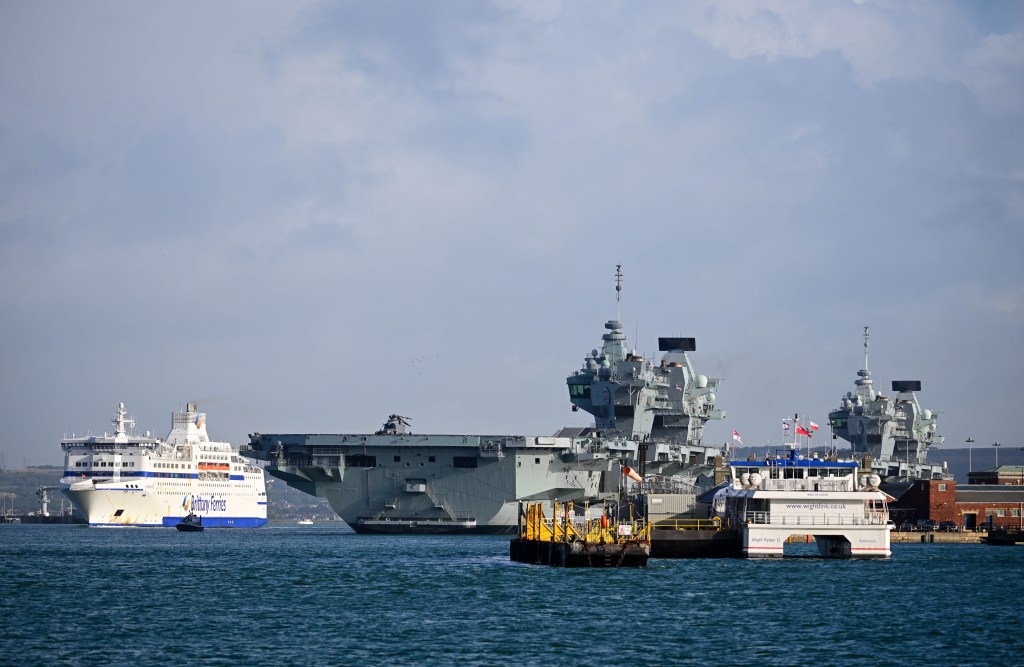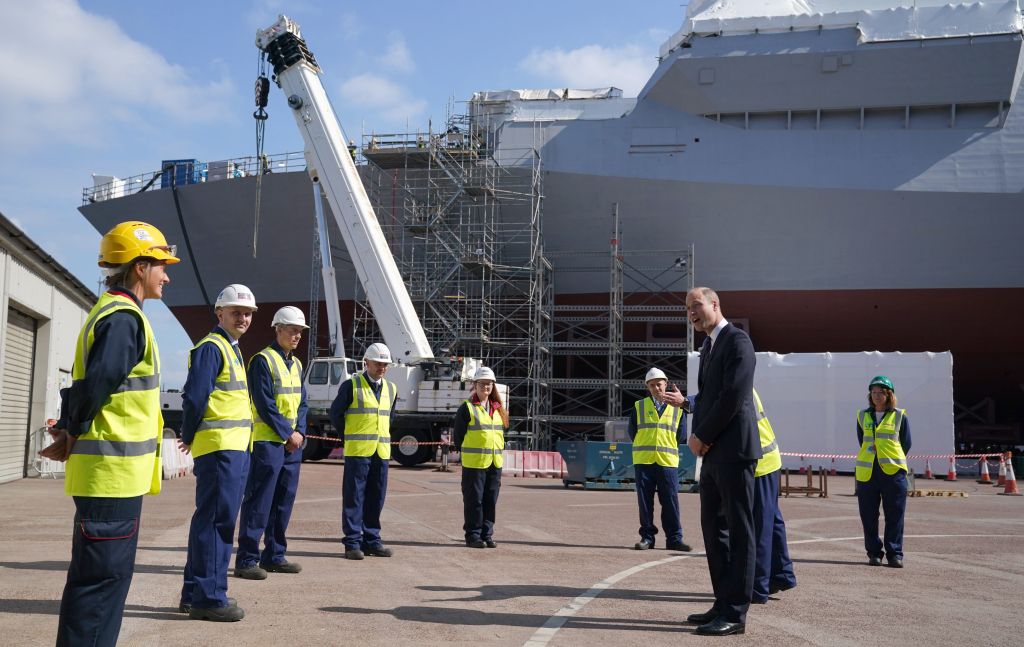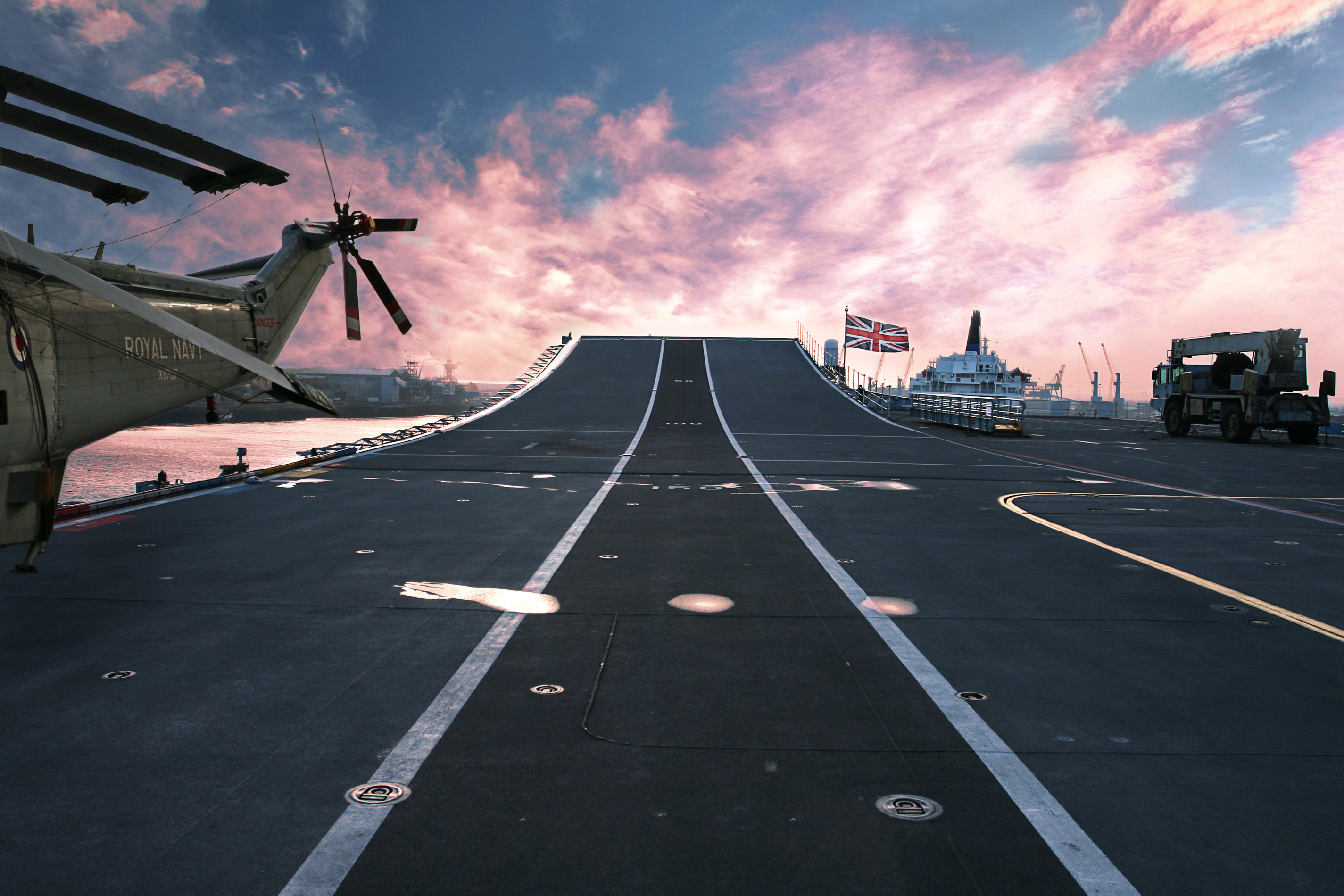As a nation of mariners, the United Kingdom is known for its seagoing vessels, and nowhere is that seafaring tradition more evident than in the Royal Navy. The nation’s state-of-the-art fleet includes frigates, destroyers, support ships and aircraft carriers like the HMS Queen Elizabeth and HMS Prince of Wales. Each of these ships relies upon VMware solutions to run applications critical to the executive functions of the Combat System that allow the Royal Navy to navigate, fight, plan and maintain the ship.

At Portsmouth, on the south coast of England, a landlocked ship is docked on the lush green of Portsdown Hill. This is no ancient ship burial vis-à-vis Sutton Hoo, but a technological replica of a Type 45 Daring Class destroyer. These ships perform many functions, from pursuing pirates to defending the fleet to providing humanitarian aid. But this unusual land-based ship is The Maritime Integration and Support Centre (MISC), a facility owned and operated by BAE Systems, one of the world’s leading designers and manufacturers of naval and commercial ships, submarines and combat systems equipment that support the maritime industry. At The MISC, BAE Systems provides cutting-edge technology and infrastructure for training, logistics and support services.
“This is the place where we prove how complex combat systems will fulfill their function prior to deployment,” says Finbar O’Keeffe, head of innovation, BAE Systems, Naval Ships Combat Systems. “The MISC serves to make sure that all those bits of equipment work as a coherent whole before a ship sails out on operations.”
Cutting-edge technology for national defence
VMware technology is ubiquitous throughout the Royal Navy fleet through the BAE Systems supplied Shared Infrastructure, and the MISC is where those systems are developed, tested and then ultimately deployed. Platforms such as the Type 23 Duke class frigates, LPD, Type 45 and Queen Elizabeth class aircraft carriers, and the new Type 26 frigate, still in production, use VMware technology extensively, shoreside and at sea. Used to run operations and applications critical to the executive functions of the combat system, each of these vessels rely on VMware solutions to run the applications that allow the Royal Navy to navigate, fight or plan safely.
BAE Systems also uses VMware solutions when providing development and integration hardware and software “rigs” to the application development supply chain, integrated with other defence companies throughout Europe.

Enabling flexible operations anywhere on board
Enabling ships to operate more flexibly by providing command and control functions from anywhere on board is mission-critical. The Royal Navy’s Shared Infrastructure uses VMware Horizon View extensively across the fleet to deliver key applications to consoles—onboard computer stations—throughout each ship. Horizon View powers each ship’s operations room, bridge and engineering spaces, providing crew members with the ability to access or move critical functions—navigation, gun control, combat management system—to different stations as needed. If the ship experiences an outage or damage, control systems can be shifted quickly to keep the combat system in continuous operation. This is an important technology for any vessel at sea and even more crucial for national defence.
At the MISC and throughout its engineering facilities, BAE Systems runs an on-premises engineering and developer cloud based on VMware vSphere that internal development teams use to collaborate and develop software for all aspects of the combat systems business.
“VMware has been absolutely core to building the technology stack that underpins almost all the combat systems equipment,” says O’Keeffe. “It is part of the deployed stack at sea, and we have VMware software and technology in this facility mimicking the at-sea deployed technology.”
Ship-sized test facility for advanced solutions
At the MISC, in particular, BAE Systems replicates the information technology infrastructure deployed on all Royal Navy ships, creating virtual vessels where engineers can launch and test solutions on land before they’re deployed at sea. The MISC functions as a sophisticated test and integration facility that enables BAE Systems and the Royal Navy to create the advanced solutions the nation depends on for defence.
“The world we’re heading into, as a defence enterprise, is software-defined,” says O’Keeffe. “A ship needs to be a single fighting unit. It needs to operate independently or as part of a task group, so if we put that capability into software, then we can change it, we can update it, and we can be faster and better than our competitors.”
VMware technology allows BAE Systems to provide a more open environment than the Royal Navy has previously enjoyed. “It means they’ve got a simpler system to manage from a component parts perspective,” says Alan Minister, Shared Infrastructure System design authority, Naval Ships Combat Systems, BAE Systems. “Shared Infrastructure provides a coherent suite of controls to the maintainers for our integrated cloud environment rather than a whole disparate array of hardware and management interfaces.”
Creating a secure, floating cloud deployed at sea
Using VMware technology, BAE Systems created a freestanding, secure cloud deployed at sea. “Shared Infrastructure is basically a floating cloud,” says Minister. “So, on board the Navy vessels, we have a cloud infrastructure that is completely disconnected from the Internet. It must run standalone and cope with all sorts of issues on board.”
VMware provides BAE Systems with the operating environment that enables live migration of virtual machines. “We take these systems and host them on our VMware environment,” says Minister. “We provide the controls to that environment, optimized for the maintainers on board, so they can manage the system.”
As with traditional land-based systems, VMware provides BAE Systems with the ability, if hardware fails, to move the software to a backup rather than being forced to fix a problem immediately. “So, it’s much faster with less downtime,” says Minister. “I find the technology very exciting for its ability to help our customers in new and interesting ways.”
O’Keeffe agrees. “It’s a very inspiring place here at the MISC,” he says. “It’s all about getting close to customers, working hand-in-glove with the Royal Navy, making sure we understand exactly what they need so we can provide it to them. BAE Systems must be able to deliver precision solutions that are crucial to the Royal Navy’s mission. And that’s exactly what we do.”
